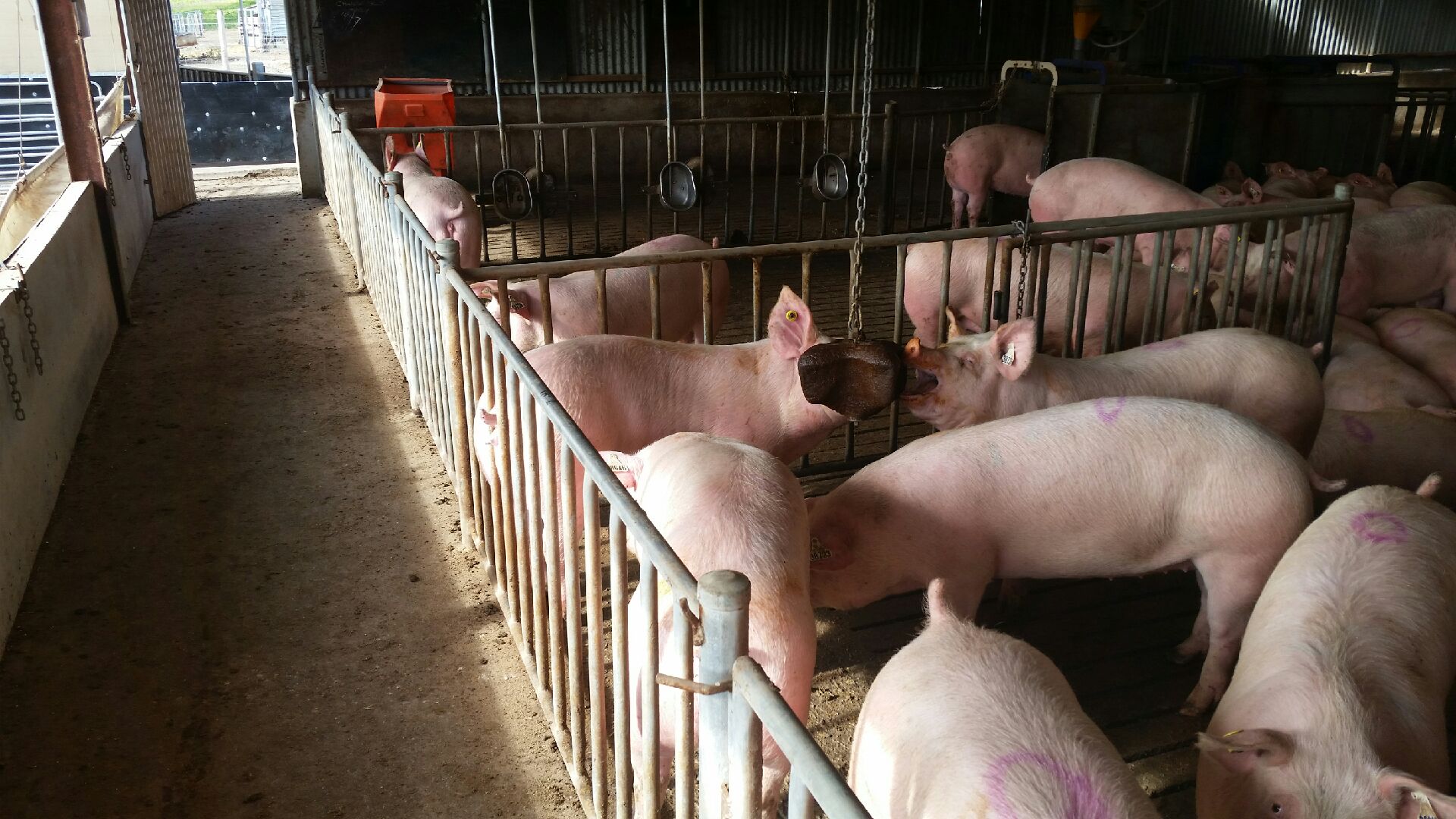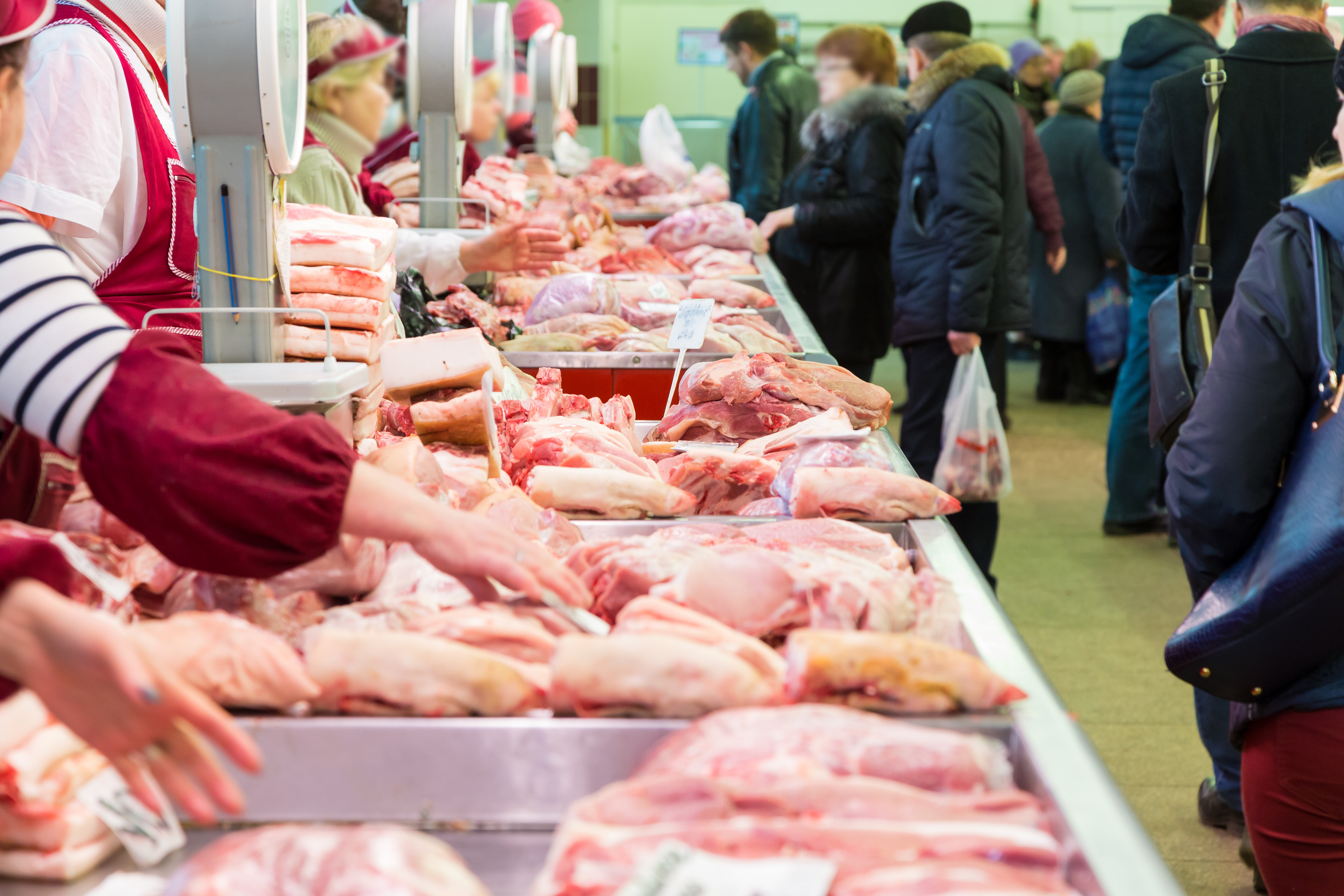



Pig outlook: Lean hog futures bulls come back to life
US hog markets rallied this week while China's pig industry begins to restructure.The pig traders’ perspective
Lean hog futures have this week posted solid rallies and price uptrends are back in place on the daily bar charts. Look for more on the upside in the futures market in the near term. US cash hog prices are on the rise this week after a Midwest winter storm slowed marketings earlier in the week.
The pork cut-out values this week rose to the highest in almost 12 weeks. Pork demand remains generally healthy, particularly considering the time of year and big production of late. Slaughter the first three days of this week was 1.427 million head, up from 1.423 million a week earlier and 50,000 less than the same week a year ago. Optimism about continued Chinese pork purchases is fuelled in part by rumours of food shortages, have helped to drive prices higher the past several weeks.
The next week’s likely high-low price trading ranges
April lean hog futures--$73.00 to $80.00, and with a sideways-higher bias
March soybean meal futures--$417.60 to $450.00, and with a sideways bias
March corn futures--$5.20 to $5.50, and a sideways-higher bias

© Jim Wyckoff
The view from the US
USDA outlook for feed prices
The 2020/21 corn price forecast is $4.20 per bushel, $0.20 higher than last month’s forecast. The 2020/21 forecast for soybean meal has been raised to $390 per short ton, $20 higher than the last estimate.
USDA’s Economic Research Service says the alfalfa hay price in November was $167 per short ton, $4 lower than October and $2 lower than November 2019. The 5-State weighted-average price for premium alfalfa hay in November was $200 per short ton, $6 higher than October but $9 lower than November 2019.
USDA forecasts higher US pork production for 2021
Among the data contained in the USDA report were revised 2020 hog inventory numbers, as well as new inventory data for 1 December 2020, the start of the swine “crop” year. The report’s revised inventory and farrowing data largely reconcile 2020 hog and pig numbers with USDA slaughter numbers to date. For 2021, the report showed beginning-year December 1 inventories of both all hogs and pigs and market hogs down 1 percent from a year earlier. Further, the report indicated that breeding animal numbers were 3 percent lower than on 1 December 2019.
While first-half 2021 pork production is impacted primarily by hog production decisions implemented in the second half of 2020, lower 1 December 2020, breeding animal inventories have second-half 2021 pork production implications.

Pork production in 2021—forecast at almost 29 billion pounds—is expected to be about 1.3 percent higher than production in 2020. Higher expected first-half 2021 pork production derives largely from a rebounded processing industry, compared with COVID-19-related industry slowdowns of a year earlier. While information in the report indicates that first-half numbers of slaughter-ready animals are likely smaller than in the same period last year, a fully functioning US processing industry is capable of handling larger numbers than in the first half of last year.
In the second half of 2021, higher year-over year pork production results from expectations that slightly higher farrowings—as indicated by the December report’s first- and second-quarter 2021 producer-stated farrowing intentions—and a resumption of higher litter rate trends are likely to combine to offset lower breeding inventory numbers.
The lower 1 December breeding inventory, reported at 6.275 million head, down 3 percent from a year earlier, is the third consecutive quarterly year-over-year reduction in the breeding inventory total. From June 2020 through 1 December 2020, the US breeding inventory averaged 125,000 fewer animals, almost 2 percent below the average of the same period a year earlier. Lower breeding inventories since June of last year follow from the higher sow and boar slaughter numbers reported by USDA.
Lower breeding inventories are also generally supported by the lower producer returns reported by Iowa State University’s calculated monthly returns for Iowa farrow-to-finish operations. Through 3 November, the series reported a cumulative per-head loss of $21.59. It is notable, however, that returns reversed direction during the fourth quarter of calendar year 2020; Iowa State calculated producer returns for October and November (the latest data available) summed to $39.36 per head. It is also notable that a longer perspective on the breeding inventory series suggests that breeding numbers peaked on 1 December 2019, at 6.47 million head. Expectations for continued technical improvements in sow productivity are likely to add to downside risk for breeding inventory numbers.
China continues to buy US pork
The latest weekly USDA export sales report Thursday 28 January showed US pork net sales of 52,900 metric tonnes (MT) reported for 2021, with increases primarily for Mexico (18,900 MT, including decreases of 1,100 MT), China (13,900 MT, including decreases of 1,000 MT), the Philippines (6,000 MT, including decreases of 200 MT), Japan (4,100 MT, including decreases of 100 MT), and South Korea (3,100 MT, including decreases of 600 MT), were offset by reductions primarily for El Salvador (300 MT). Exports of 39,600 MT were primarily to China (12,500 MT), Mexico (11,900 MT), Japan (4,600 MT), South Korea (2,600 MT), and Canada (2,100 MT).

Updates on China's pig industry
Strong livestock feed demand in China
USDA reports that China’s feed demand will remain robust in MY2020/21 with continued swine restocking and livestock sector growth contributing to an overall feed demand increase of 15.6 million metric tonnes (MMT) from MY2019/20. Many industry contacts forecast a 23 million metric ton (MMT) corn deficit in MY2020/21.
To meet demand, the gap will be filled by reserve auctions, substitutions, and imports. North and East feed mills are more active in rice and wheat auctions specifically targeting sales to feed mills, while Southern mills have easy access to imports of alternative grains. In general, top industry players see rice and wheat substitutes as the major feed trend for the next two years. This trend has been spreading from the North China Plain (NCP) to central China, and from solely in poultry feed to hog feed, as well.
China may be hiding a food scarcity
An ag industry analyst emails: “Talk among some traders and brokers is that China is experiencing a serious food shortage. China has been making bigger purchases of US grains lately, as part of a previous trade agreement between the two largest economies in the world. Also, there are some reports that COVID-19 is making a resurgence in some locations in China. All of the above could impact China’s economic growth prospects. Of course, the China government’s secretive nature makes anything of this nature hard to confirm, but it bears keeping a closer eye upon.”
China eyes plant-based meat alternatives
While China remains the world’s leading consumer of meat and poultry, demand for plant-based meat alternatives is on the rise. With plant-based meat alternatives currently meeting or exceeding the cost of similar meat and poultry portions, leading plant-based meat alternative companies are focused on products that are alternatives for beef and pork, which tend to command a higher market price. Along with the relatively high price of plant-based meat alternatives, the main challenges facing the sector are taste, labelling, and consumer awareness, understanding, and acceptance.
Read Jim Wyckoff's analysis of the poultry industry on The Poultry Site and see the latest updates on the global beef and dairy industry on The Cattle Site.







